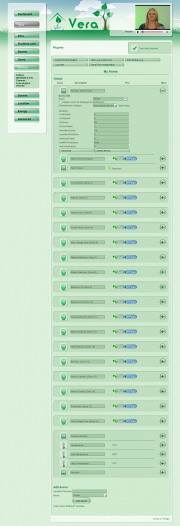Paradox Alarm Plugin
This page not intentionally left blank, it's just not finished yet :)
Contents |
Introduction
The Paradox Alarm plugin is a Luup component that connects Vera to a Paradox Security Alarm panel (DGP-848, EVO-48, EVO-192 or Spectra) via their Home Automation interface (Paradox PRT3) over USB.
Through this interface, events occurring within the Alarm Panel are exposed to Vera including the status of any attached Doors, Windows, Motion Sensors. Additionally, the interface exposes the current Armed State, Stay Armed State and whether the Alarm is in Breach.
Each of these is exposed as a Motion Sensor to Vera, so that standard Scene events (Lights, Notifications, etc) can be established based upon events occurring within the Alarm Panel.
How does it work
The Paradox Alarm Panel uses a proprietary interface bus, called Combus, to talk to the devices connected to it. The PRT3 Printer Module is a Combus device that acts as a bridge between the Alarm Panel, and a standard USB (or RS-232) device. In addition, it provides a Printer connector for Raw status updates.
The PRT3 interface can be configured to expose a set of low-level Alarm Panel messages, via either of it's Serial ports, to a Home Automation device. Similarly, these low-level messages can be sent from the Home Automation device back to the Paradox Alarm Panel to perform various actions.
The PRT3 Printer module comes with instructions on how to "wire" it to the Alarm Panel, via it's 4-wire Combus interface, and the subsequent Alarm Panel configuration to get it recognized.
Terminology
- Zone - A specific sensor, such as a Window, Door or Motion Sensor
- Area/Partition - A Collection of Zones (typically 1 in a house, but more for external garages and guest houses (etc))
Messages
Depending upon the specific model of Alarm Panel, there will be support for different numbers of Zones, and Areas. At startup of the Paradox Alarm Plugin, messages are exchanged with the Alarm Panel itself to understand how many Zones and Areas are in the Panel, the Labels for these, and the "current" state for any Zone.
These low-level messages are varied, but include:
- Retrieve a Zone Label
- Retrieve a User Label
- Retrieve a Area Label
- Read the status of a Zone (open/closed)
- Read the status of an Area (armed/force-armed, stay-armed/instant-armed, alerting/breach)
- Zone status change events
- Area status change events
- Request Arming/Force-Arming
- Request Stay-Arming/Instant-Arming
- Trigger Alerting/Breach
- Keyfob and Voice Activation events
The Paradox Alarm Plugin processing
Startup processing
The Startup processing for the Alarm Panel plugin looks roughly like:
- determine the number of Areas in the System, and their Labels
- create Child devices per Area found
- Armed <Area n Label>
- Stay Armed <Area n Label>
- Alarm Breach <Area n Label>
- determine the number of Zones in the System, and their Labels
- create a Child device per Zone found using the Label read from the Alarm Panel
- determine the number of Users in the System, and their associated Labels (**for future use)
- retrieve the current state of each Area, and "set" it into Vera
- retrieve the current state of each Zone, and "set" it into Vera
During the startup processing, any "out of band" events received are skipped over. This can happen, for example, if someone triggers a motion sensor event as Vera is booting up the plugin.
To simplify the number of Zones created, the Plugin will look for "Empty" or "Default" Labels on a zone, and skip over it. If you want a Zone to be picked up, it must have a non-empty, non-default label...
Event processing
After startup, the system is set running. It receives events and, for those of interest, it translates them into MotionSensor values to set upon it's Child Devices.
Installation
Errors
Discussion
References
- Paradox EVO48/192 Alarm Panel - http://www.paradox.com/Products/default.asp?PID=184
- Paradox PRT3 Printer Module - http://www.paradox.com/Products/default.asp?PID=218
- Paradox K641 Blue Keypad Module - http://www.paradox.com/Products/default.asp?PID=189

